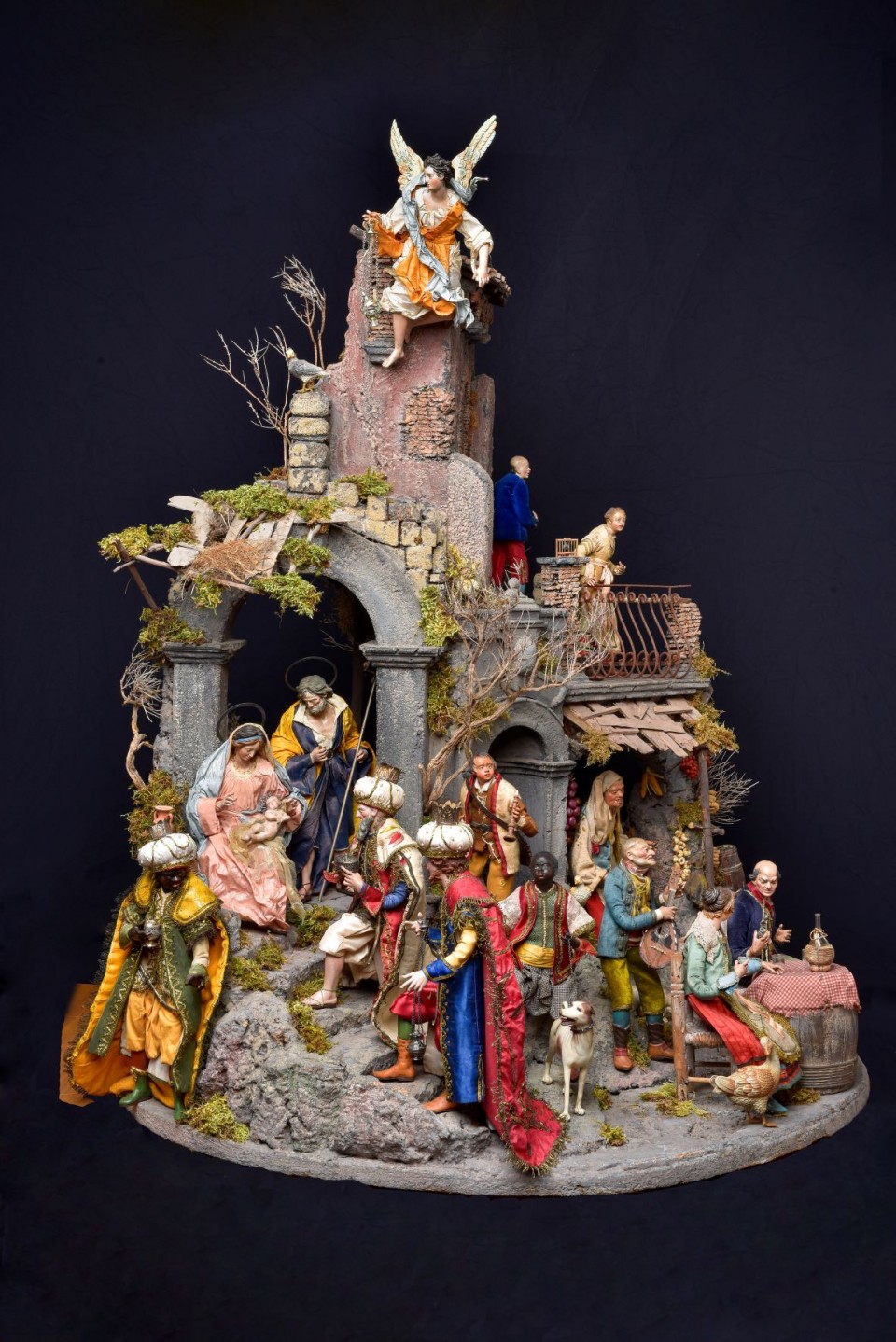You are here: Pinacoteca Ambrosiana
Experience
5vie selection
physical event
Info
From Dec. 1 to the end of January, the Pinacoteca Ambrosiana will host a widespread exhibition of Nativity scenes from the Dalmine Nativity Museum.
Eleven specimens of various origins. Neapolitan, Lombard, African and Burmese Nativities made with the most diverse techniques. Those made of paper, "a teatrino," or made with figures obtained from special "cutout sheets" mounted on rigid supports and arranged in a scene, were donated to the Dalmine Museum by a private collector and all date from the late nineteenth and early twentieth centuries. Prominent among them are the reproduction of the Nativity scene made by the artist Giuseppe Carsana in 1868 for the Shrine of Our Lady of Sorrows in Rho and the printed transposition of some characters from the famous "Gernetto nativity scene" painted by Francesco Londonio, a painter widely represented in Ambrosian collections and one of the reference models of the entire Milanese printed production of the 19th century. The proposal aims to be a contribution to the rediscovery of the charm and enchantment of paper nativity scenes, widespread in Europe since the first half of the 18th century, which are a significant part of the Catholic tradition. It is an artistic and cultural heritage that in recent years has been reevaluated by researchers and collectors, allowing the formation of valuable collections that include the most diverse types. On display in the Medusa Room is the revolving Neapolitan nativity scene: a classic cork setting, the typical Neapolitan rock, houses this nativity teeming with characters. Next to the sacred scene of the Adoration of the Magi we find scenes of daily life such as the wonderful tavern with a set table. At the back a shepherd sleeps: it is Benino, a typical figure in the Neapolitan nativity scene who symbolizes the one who has fallen asleep in the old world and is awakening in the new Christian world. Some ancient Neapolitan figures are also displayed at the beginning of the pre-course. These include a Holy Family, two Moors with horses, the latter recalling the figures depicted in the procession of Titian's "Adoration of the Magi," and three extraordinarily crafted Magi, with finely modeled terracotta faces and glass paste eyes. The beards, hair and even wrinkles: every detail gives great expressiveness to these majestic figures. The clothes are made of hand-stitched silk, adorned with golden trimmings and embroidered canvases. The Lombard plaster nativity scene, made in the 20th century from 19th-century molds and models, has come down to us in an excellent state of preservation, despite the very fragile material. The iconography of the characters is rich, with figures differently posed and all finished with special care, dressed in tunics according to the Lombard plaster nativity tradition.
The artisanal production of plaster nativity figures in Lombardy was active from about 1700 to 1940 when, almost suddenly, it ceased due to the advent of plastic figures, which were less expensive and, above all, less fragile. Statues were made in workshops using wooden casts. The painting and decoration was entrusted almost exclusively to women. Of the two African nativity scenes, one is made of carved rosewood, the other is made of metal with beautiful figures of seated musicians playing. Finally, the Burmese Nativity is made of painted and gilded wood, a unique nativity scene that encompasses West in message and East in style. On December 17, it will also be possible to book an exclusive Christmas event featuring a concert in the Federiciana Hall followed by a guided tour of the "Nativity Scenes at the Ambrosiana" exhibition.
